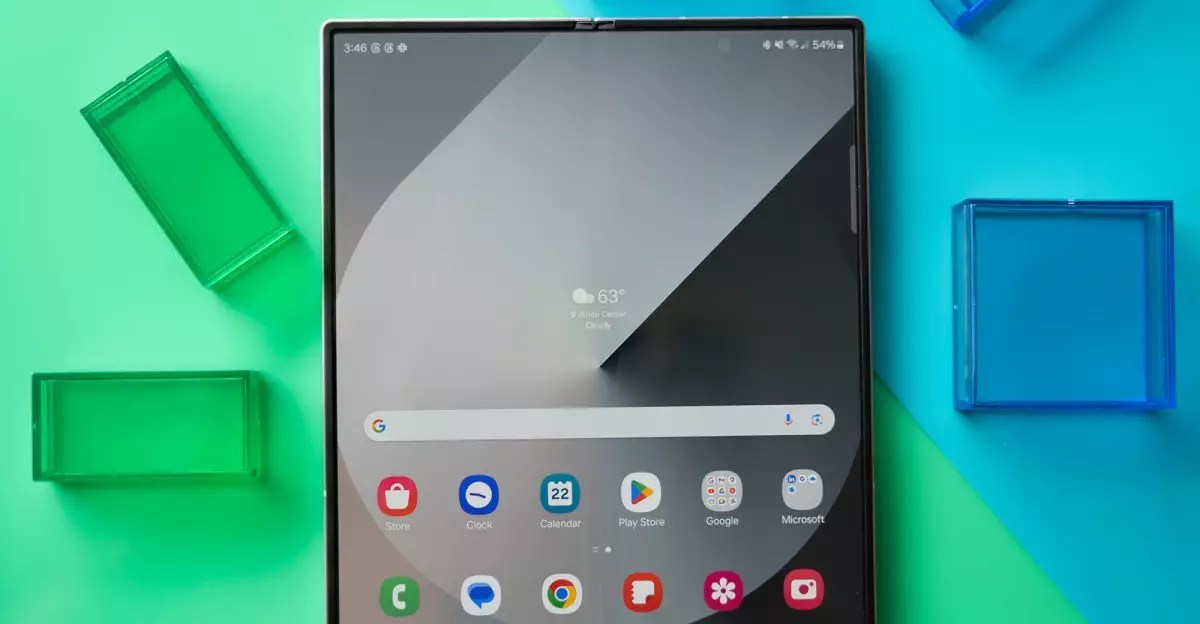In recent years, foldable smartphones have been heralded as the next frontier in mobile innovation. Yet, despite the hype and manufacturers’ relentless efforts, the market for these devices remains underwhelming. Samsung, as a pioneer in this space, has invested heavily in evolving its foldable lineup, but the question lingers: can they truly convert curiosity into consistent sales? Samsung’s latest strategies suggest a deeper commitment, but whether these innovations will be enough to shift consumer perception and adoption is uncertain. What’s clear is that, despite the technological advancements, foldables still battle core issues—durability, affordability, and perceived value—that threaten their mainstream success.
The crux of the matter lies in consumer confidence. No matter how alluring a device looks or how innovative its features, potential buyers remain hesitant. The reasons are multifaceted: concerns about fragility, high repair costs, and the hesitation to abandon traditional slab phones for an unproven form factor. Consequentially, Samsung’s attempts to improve the foldable experience by reducing thickness, expanding screens, and adding fancy features might not suffice unless these hurdles are addressed holistically. Shiny new designs alone will not foster mass market acceptance unless consumers see tangible benefits that outweigh the costs and risks involved.
Samsung’s Incremental Changes and Their Limitations
Historically, Samsung’s foldable devices—such as the Z Fold and Z Flip series—have seen iterative improvements rather than revolutionary change. Last year’s models, for instance, offered modest enhancements like software updates and slight design tweaks. While these updates polished the devices’ appearances, they failed to tackle the fundamental issues: durability and price. Foldables remain susceptible to dust ingress, and the absence of comprehensive IP ratings underscores their vulnerability. The fragility of foldable screens, combined with higher repair costs, continues to be a deterrent for cautious consumers weighing the investment.
Despite Samsung’s efforts to update hardware specifications, the core experience hasn’t shifted dramatically enough to incentivize a broader audience. Notably, the introduction of the Galaxy Z Flip 6 and Fold 6 did little to excite the market—merely cosmetic updates rather than meaningful leaps forward. Consumers are left pondering whether a foldable device’s novelty justifies its premium price, especially when comparable flagship smartphones offer similar performance at lower costs with less risk.
However, Samsung appears poised to change this narrative sharply. Rumors suggest the imminent arrival of an Ultra foldable, promising a thinner profile and more robust build. This signals an acknowledgment that consumers crave not just innovation, but a product that addresses real-world usability issues—portability, durability, and cost-effectiveness. The challenge will be delivering on these promises convincingly enough to turn the tide in favor of foldables.
Market Dynamics and the Role of Competitors
The foldable market remains a niche within the broader smartphone landscape. Industry analysts estimate that foldables constitute about 1.5 percent of total smartphone sales, a tiny fraction that hints at vast room for growth but also underscores the obstacles faced. Samsung’s market dominance in the foldable segment has yet to translate into meaningful market share expansion, largely due to the perception of high costs and durability issues.
Meanwhile, competitors like Motorola have found niche success with flip-style devices, recording impressive growth in foldable market share. However, their gains represent a small slice of a very limited pie. Meanwhile, companies like Honor and Oppo are experimenting with form factors that challenge traditional designs, pushing innovation into regions where consumers are more receptive—such as more affordable or slightly different hardware configurations.
A pivotal development may come from Apple. Rumors of an Apple foldable—possibly named iFold—slated for launch in 2026, could be the catalyst needed to mainstream foldables in the United States. Apple’s brand power and loyal customer base could propel foldable devices into the mainstream consciousness, encouraging other manufacturers to follow suit with more compelling offerings. Such competition could also pressure Samsung to escalate its game, not just with better hardware, but with a more persuasive narrative emphasizing durability, value, and seamless user experience.
The Road Ahead: Innovation or Reinvention?
Ultimately, Samsung’s future success hinges on more than just incremental upgrades. The company must offer a compelling reason for consumers to take risks with foldables—whether through pioneering durability features, reducing prices, or delivering innovative form factors. For example, the potential introduction of a hinge that minimizes wear and tear, or the deployment of foldables with robust IP ratings, would be game-changers. However, whether Samsung can execute these innovations at scale remains a question mark.
What this means is that Samsung’s ultra ambitions may need to extend beyond hardware enhancements. Effective marketing, education, and demonstrating real-world durability are critical components of fostering consumer trust. It’s not enough to say “here’s a more stylish foldable”—consumers need assurance that their devices will last and provide value over time. Until such promises are consistently delivered, foldables will continue to be perceived as tech novelties rather than essential tools.
In this context, Samsung’s bid to introduce more affordable foldables—such as a budget-friendly FE version—may serve as an entry point that expands overall market potential. Yet, without addressing fundamental concerns about durability and the high repair costs, these efforts risk being short-lived flashes of innovation rather than sustained market growth.
As the foldable ecosystem matures, the true challenge for Samsung and its competitors will be transforming consumer skepticism into conviction. Only then can foldables transcend their niche status and become an integral part of our mobile experience. Until that shift occurs, the promise of foldables remains tantalizing yet elusive—a future still waiting to unfold.


Leave a Reply